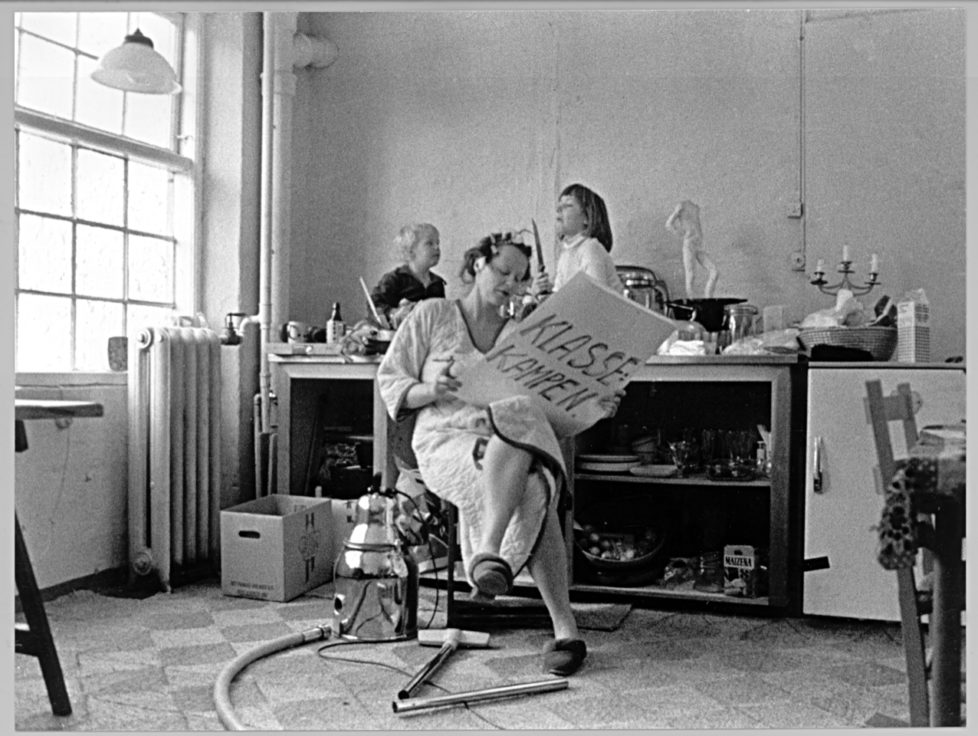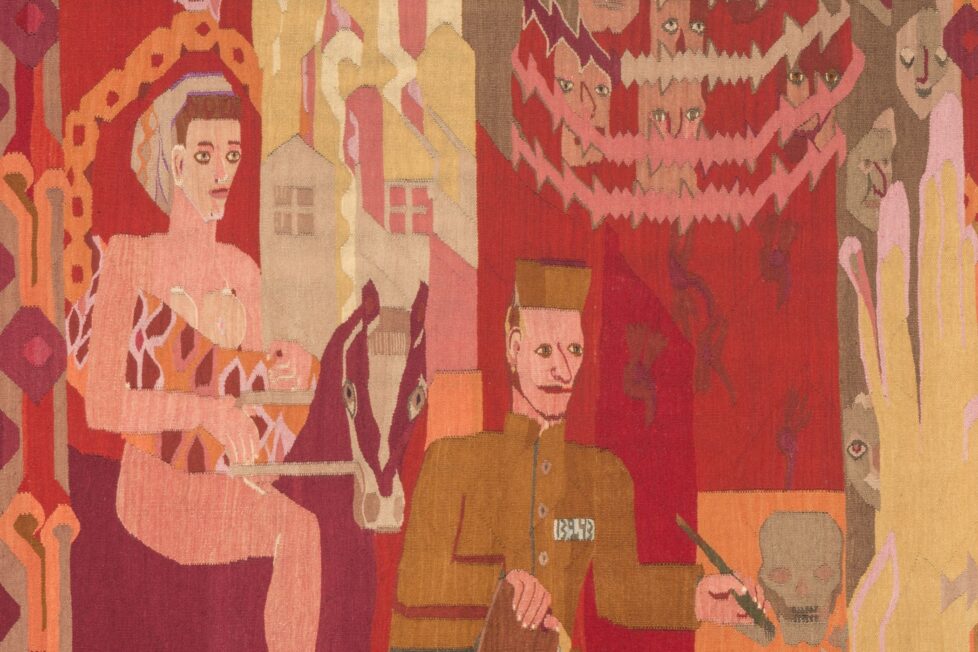
In the wake of last autumn’s debate on balanced gender representation in the Danish art world, the City of Copenhagen is now taking action. From now on, the municipal Council for Visual Arts will buy equal amounts of art by men and women. Importantly, the council will also strive to spend the same amount of money on works by male and female artists, respectively.
The debate – and thus the Council’s decision – was prompted by an American survey published in September 2019. Among other things, this study showed that women artists accounted for only two per cent of the sales made at global auctions in the last ten years. Although the study focused on the United States, it nevertheless received a great deal of attention in Danish media – not least due to the announcement made by Michael Thouber, director of Kunsthal Charlottenborg, who asserted that the figures were so depressing that it was high time to introduce gender quotas.
The debate was picked up by the Association of Danish Museums (ODM): in November, the organisation published the results of a survey taken among its members concerning the representation of women artists in the museums’ exhibitions and purchases.
The figures showed that even though things are not quite as bad as in America, true equality is still distant on the horizon of the Danish art world. For example, solo shows featuring women artists accounted for twenty-nine per cent of all solo exhibitions, while works by women artists accounted for twenty-two per cent of all art acquisitions during the period 2004 to 2019. Even so, the association also found reasons for optimism. Looking at the figures for the past five years, one finds that the relative ratio of acquisitions of works by women artists has risen to thirty-six per cent, while the corresponding figure for solo shows featuring women artists has gone up to thirty-four per cent. It appears that progress is being made.
For the City of Copenhagen’s Council for Visual Arts, gender equality in its acquisitions policies has long been an area of focus. In the past six years, for example, the council has purchased works by 109 men and eighty-one women, and in 2019 it bought an equal number of works by men and women. However, when delving into details, it is evident that more money has been spent on works by male artists. This is partly why guidelines are now being introduced in the area.
Kunstkritikk spoke with Thouber, who is also a member of the Council for Visual Arts.
The Association of Danish Museums recently conducted a study showing that the figures for Danish museums’ purchases of works by women artists are steadily increasing. If things are already moving in the right direction within the field, what’s the argument for introducing gender quotas at this particular point?
I think the decision now made is important because my general impression is that things are still moving too slowly as far as balanced gender representation in the art world is concerned, both at Danish museums and in the international market. We also made this decision to inspire our colleagues at other art institutions and in other municipalities and councils, opening their eyes to the fact that there are as many talented female artists out there as there are male.
The Association of Danish Museums has stated that purchases of works by women artists accounted for around twenty-two per cent during the period under scrutiny, and I still think that’s not enough. To me, this debate is about representation, and if we now have an art scene made up of a roughly equal number of female and male artists and there is no professional reason to believe that the male artists are significantly more proficient, then such massively skewed statistics still look strange to me. Regardless of whether we’re talking two per cent at auctions, eleven per cent at American museums or twenty-two per cent at Danish museums, I think that things are moving too slowly.

I myself have been among those who spoke out against quotas when the discussion raged fifteen years ago and figures showed, for example, that only six per cent of the works purchased for the National Gallery of Denmark were created by women. Back then, I said that that figure would improve with time and that things were already changing. And in a sense they were: there’s a difference between six per cent back then and around twenty-two per cent today, but things are still changing too slowly.
You mention the issue of equal pay for male and female artists as one of the reasons why quotas are a good idea. Can you explain how it is that the City of Copenhagen has bought the same number of works by men and women in recent years, but paid more for works by male artists?
There can be two explanations for this: we have either bought more extensive – and thus more expensive – works by the male artists, or the women artists have received a lower price for their works.
Kunsthal Charlottenborg, where I’m director, inhabits the same buildings as the Royal Danish Academy of Fine Arts where our young artists are trained. I think it’s sad if we indirectly tell the young women artists that they’ll never make a living off their art.
In our present-day art world, we have reached a point where women artists are easily on a par with their male counterparts in terms of quality. Now, it’s time for them to also get by financially. I’m aware that many male artists also struggle to make ends meet financially – art is a difficult field in which to make a living – but we mustn’t have a state of affairs where it’s harder to succeed financially as a woman artist simply due to gender. I don’t think we should pass on that bias to the next generation.
One explanation for the bias in the acquisitions made by museums and municipalities may be that women artists account for a rather small percentage of the artists represented by the leading commercial galleries (in 2014 the figure came to about twenty-seven per cent). How does the Council of Visual Arts respond to this inequality? For example, do you buy directly from the artists?
Gender quotas aren’t really about what happens at the moment of sale or purchase. It’s about doing proper research from the start. When the Council for Visual Arts plans a round of acquisitions, we are very aware of the need to actually view enough works by women artists, and then we make our professional assessment of which works we think are relevant candidates for purchase. Ultimately, it’s always about the work – that’s what we evaluate – but it goes without saying that if we only visit commercial galleries with an over-representation of male artists, that bias will end up being reflected in the City of Copenhagen’s collection. That’s why we also visit some of the artist-run and curator-run places, where you’ll often find a much more equal gender representation in terms of exhibitions than at the commercial galleries.
Our job is to buy the best art for the City of Copenhagen, and in my professional opinion that will not happen if we only buy art created by men. We would like to inspire others who buy art to open their eyes to the fact that skewed representation may be a sign that they’re not viewing enough art. Maybe you don’t seek out the exhibition venues where women artists actually exhibit their work. I regard this gender quota as a reminder to ourselves: we need to do our research properly, adopt a sufficiently broad outlook when making our choices, and inspire others to do the same.
–
The Council for Visual Arts (formerly the City of Copenhagen’s Visual Arts Committee) has eight members, three of whom are politically appointed, while five are art professionals, each sitting for a four year term. Over the past six years, the Council has purchased art for DKK 720,000 (EUR 96,000). The City of Copenhagen’s collection comprises some four thousand works installed at municipal institutions and offices.
In addition to Thouber, the current council consists of: Gyda Heding (Member of the City Council for Enhedslisten); Hari Prasad Neupane (Member of the City Council for the Social Democrats); Niko Grünfeld (Member of the City Council for The Alternative [Alternativet]); Mette Sandhoff Mansa (director of Kastrupgaardsamlingen, representing The Association of Danish Museums); Hannibal Andersen (artist, representing the Association of Visual Artists [Billedkunstnernes Forbund]); Torben Ribe (artist, representing The Royal Danish Academy of Fine Arts, member of the Society of Artists [Akademiraadet]); and Kristian Poulsen (artist, representing UKK – Organisation for Artists, Curators, and Art Mediators).


















